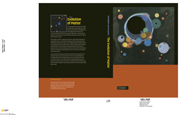Book contents
- Frontmatter
- Contents
- Introduction
- Part I The elements
- Part II Early solar system: nebula formation, evolution and lifetime
- Part III Accretion of the Earth
- 14 Introduction to the planetary system, Earth and Moon
- 15 Introduction to planetary accretion
- 16 Earth accretion: the giant impact(s)
- 17 The post-accretion silicate Earth: comparison with meteorites
- 18 Core segregation
- 19 Heavy “crust” on the top of the core
- 20 The early atmo-hydrosphere
- 21 Light from the Moon …
- Part IV Global evolution of the Earth
- References
- Glossary
- Abbreviations
- Meteorites, rocks and minerals
- Index
16 - Earth accretion: the giant impact(s)
Published online by Cambridge University Press: 04 September 2009
- Frontmatter
- Contents
- Introduction
- Part I The elements
- Part II Early solar system: nebula formation, evolution and lifetime
- Part III Accretion of the Earth
- 14 Introduction to the planetary system, Earth and Moon
- 15 Introduction to planetary accretion
- 16 Earth accretion: the giant impact(s)
- 17 The post-accretion silicate Earth: comparison with meteorites
- 18 Core segregation
- 19 Heavy “crust” on the top of the core
- 20 The early atmo-hydrosphere
- 21 Light from the Moon …
- Part IV Global evolution of the Earth
- References
- Glossary
- Abbreviations
- Meteorites, rocks and minerals
- Index
Summary
Giant impacts: impactor mass and energy deposited
Giant collisions and the merging of massive bodies, ∼ 1027 g, during the late stages of planetary accretion are a straightforward prediction of the standard model (Wetherill, 1990). Probably the Moon was formed by the giant impact of the proto-Earth with an approximately Mars-sized proto-planet. Modelling, both analytical (Vityazev et al., 1990) and numerical (Benz et al., 1986, 1987) predicts that impacts between planet-sized bodies must be far from elastic and that most of the energy released must be deposited within the growing planet.
For the Earth–Moon system, the impactor mass mIMP, its velocity υIMP and the “off-centre” or impact parameter bIMP together determined the system's total angular momentum LEM = mIMPυIMPbIMP = 3.5 × 1041 g cm2 s−1, provided that LEM resulted only from the impact (Melosh et al., 1993). The value of each individual quantity is uncertain; nevertheless reasonable estimates are possible. High-resolution numerical modelling of the giant impact suggests a proto-Earth mass at the time of collision of equal to 0.8 to 0.85 M⊕ (Canup, 2004). The escape velocity υESC from such a body is ∼ 106 cm s−1 (see Eqn 15.1), and this equals the lowest possible relative velocity of the impactor; υIMP ≥ υESC. For the off-centre parameter bIMP, a value ∼ 5 × 108 cm (the centre of the impactor grazes the surface of the proto-Earth) would result in the observed high angular momentum of the post-impact Earth–Moon system.
- Type
- Chapter
- Information
- The Evolution of MatterFrom the Big Bang to the Present Day, pp. 211 - 213Publisher: Cambridge University PressPrint publication year: 2008



